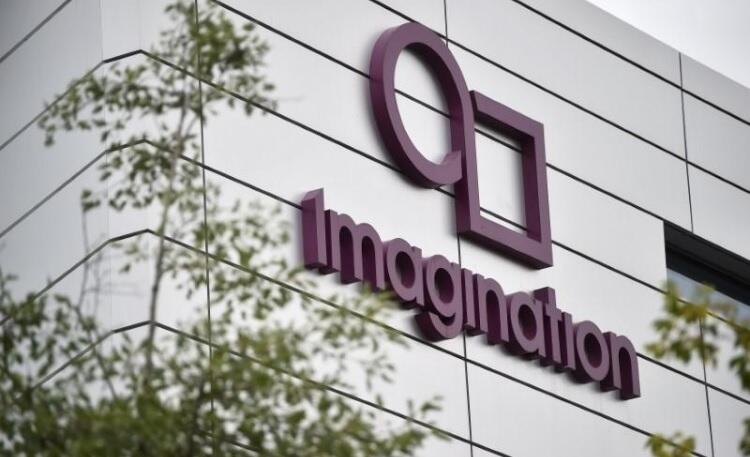Imagination Reignites Relationship with Apple
Article By : Nitin Dahad

Apple returns to Imagination Technologies for GPUs with a fresh multi-year license agreement.
A year after taking the helm at Imagination Technologies, CEO Ron Black appears to have managed to put an end to a phase of uncertainty for his company by signing a new agreement with Apple.
Apple made a public statement in 2017, notifying that it was ditching Imagination, by designing the UK firm’s IP cores out of Apple’s products within two years.
That, however, appears to be no longer the case.
Imagination, in a one-line press statement, said today that it has replaced the multi-year, multi-use license agreement with Apple, first announced on February 6, 2014, with a new multi-year license agreement under which Apple has access to a wider range of Imagination’s intellectual property in exchange for license fees.
We pressed for a comment from Black, but were told he wouldn’t do so. Given an uncertain period Imagination had to go through, this is a significant piece of news for the company.
While Imagination wouldn’t comment, we can only speculate that it is quite possible Apple was unable to come to a deal on Imagination patents within the two-year time frame for going self-sufficient and designing GPUs in-house. In addition, a newly invigorated management team headed by Black and stability provided by owners Canyon Bridge would have very likely played a big part in helping revive the negotiations with Apple.
Imagination’s chief marketing officer David Harold told EE Times, “We can’t comment on today’s announcement, but I think it’s one of several things Imagination has to feel good about as we head into 2020. We feel resurgent. Great new leadership, some excellent new senior talent, a groundswell of engagement in China, the launch of our best GPU ever to date in A-Series, and the industry starting to understand the value of ray tracing.”
With augmented reality becoming a big part of the next-generation mobile over 5G networks, and the next generation of gaming consoles pushing up graphics quality even further, my guess is that ray tracing technology could also be one of the future areas that could be part of the new Apple deal. The graphics IP firm has already publicly said it plans to release a ray tracing enabled GPU in late 2020 or early 2021. In a blog published today Imagination said, “Once implemented into SoCs, this IP will provide developers with desktop-PC class hybrid ray tracing hardware that will deliver true ray tracing enhanced applications without having to resort to cheap tricks.”
Apple’s history with Imagination
Imagination had its first design win at Apple in November 2008, licensing its PowerVR SGX graphics processor to the company. In February 2014, Apple extended its multi-year, multi-use license agreement giving Apple access to Imagination’s range of current and future PowerVR graphics and video IP cores. Under the terms of that licensing arrangement, Imagination would receive on-going license fees and royalty revenues on shipment of SoCs incorporating Imagination’s IP.
Then in 2017, Apple said it was designing Imagination out of its products. This was made even worse for Imagination as Apple was aggressively hiring graphics chip design, modelling and verification architects at a location close to Imagination’s headquarters in the UK, led by John Metcalfe, who joined Apple in 2016 after 15 years as COO and in various operational and business development roles at Imagination.

In its annual financial report covering 2018, Imagination clearly highlighted concerns over Apple’s 2017 decision to go in-house with GPU development. With revenue from its largest customer Apple, which was around £45 million (around US$60 million at current exchange rates) in 2018, the potential forthcoming loss of a large chunk of revenue was worrying the firm. Imagination said in its 2018 financial report that Apple’s 2017 decision could lead to a long running decline in royalty volumes in future years, but that it was in continued discussions to forging a renewed business relationship based on both old and new products, as well as the potential for new future technology areas.
Despite this uncertainty, Imagination emphasized it had commitment from its owner Canyon Bridge – who completed its acquisition of the company for £550M (US$700M) in November 2017 – to provide the support it needed through any transition, though at the time Imagination was concerned that the Apple loss posed a threat to the company’s future.
In our interview with Ron Black exactly a year ago, he told EE Times that Imagination was an iconic company that led the way in low-power, high-performance graphics, and it had lost its number one spot. But, he said, “I intend to bring it back there [to number one spot].” He added that Imagination’s technology today is more relevant than ever especially with the rollout of 5G, a future centered around graphics, connectivity, and relevant insights from the masses of data collected.